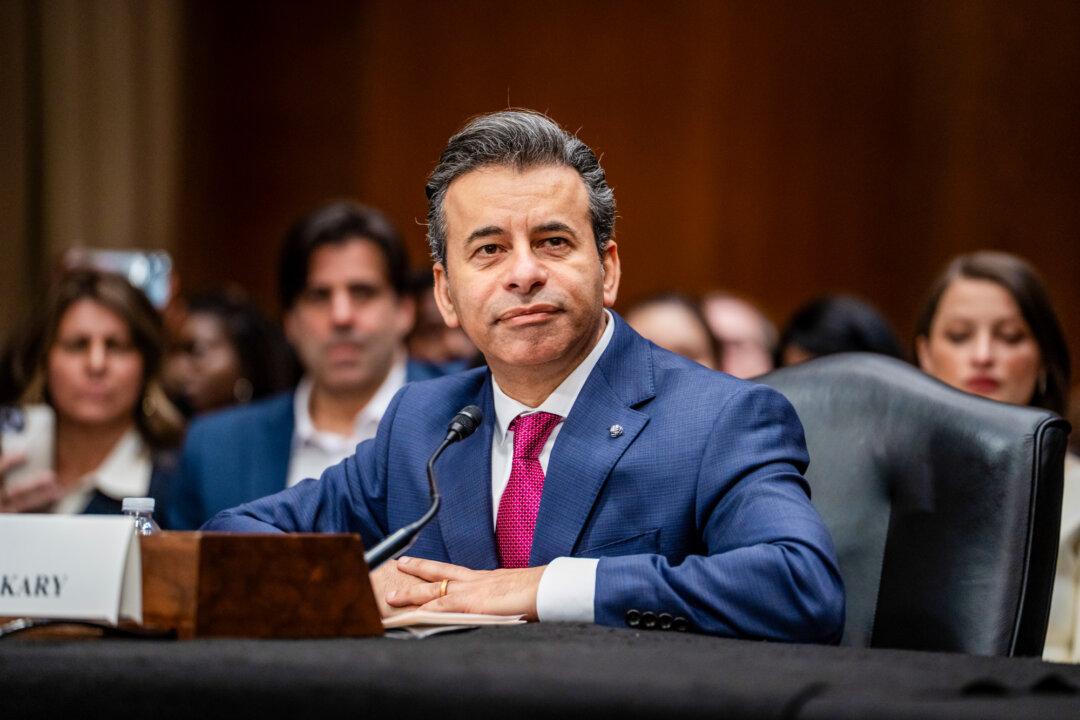A group of Ohio citizens says they will not give up after Attorney General Dave Yost rejected a March 11 proposed statute to ban vaccine mandates.
It was the fourth time that Yost turned down the initiative.
This time, he cited grounds that ballot summary language provided by the proposal’s supporters is inaccurate.
Yost sent a letter to Diana Smith, who launched the ballot initiative, claiming the proposed ballot summary wrongly said the proposed law would prevent employers from discriminating against people based on their vaccination status.
He added that the language of the proposed measure in the summary incorrectly states that public entities can’t discourage businesses from violating the law or penalize businesses for refusing to violate the law.

Yost also said there were two other areas where the proposed summary wrongly detailed the proposed law regarding businesses.
If it was passed by voters, the “Vaccine Choice and Anti-Discrimination Act” would prohibit any person, public official or employee, government agency, local government, school, daycare center, nursing home, residential care facility, health-care provider, insurer, institution, or employer from forcing individuals to get a vaccine.
The measure would also prevent bars, restaurants, live entertainment venues, and other businesses from denying service to any individuals based on their vaccination status.
The initiative would also allow Ohioans to not disclose their vaccination status, and any person who believes that the act has been violated would be permitted to file a civil lawsuit against the perceived offender.
Petitioners must file their proposal to the attorney general’s office with signatures from 1,000 Ohio voters from at least 44 of the state’s 88 counties, according to the initiated statute process.
If Yost and the ballot board approve the measure, the group must collect around 132,000 signatures for it to reach the state legislature.
Lawmakers have four months to pass the proposal. If that doesn’t happen, petitioners can gather signatures and place the measure on the ballot for voters to decide in the general election.
The ballot initiative is similar to House Bill 248, which was introduced on April 6, 2021, and received six hearings, the last on Aug. 24, 2021. The bill remains in the House Health Committee, even though it received more than 1,300 proponent testimonies.
The Ohio Chamber of Commerce opposes the proposed legislation and any measure that would dictate what businesses can and cannot do about vaccine mandates.

The bill’s sponsor, Republican State Rep. Jennifer Gross, was removed from the health committee by Republican Speaker of the House Rep. Bob Cupp in September 2021.
Gross said that Cupp told her she was taken off the committee because she introduced a discharge petition designed to remove HB 248 from the health committee and place it on the House floor for a vote.
The petition did not get the required signatures, and HB 248 is stagnating in the committee.
Smith, a Certified Medical Assistant who lives in the tiny village of Bradford in northwest Ohio, decided to move forward with the ballot initiative in October 2021 when she saw that HB 248 was mired in the health committee.
“Our elected officials aren’t willing to follow the Ohio Constitution and didn’t want to allow voting on HB 248. So, I started the initiative petition.
“I looked at the Ohio attorney general’s website, took examples of previous ballot initiatives, and created the summary,” Smith said.
“I am not an anti-vaxxer. I am an anti-mandate and anti-discrimination person. People should be able to do their own research and choose what they want done to their bodies without discrimination.”
Representatives of Ohio Advocates for Medical Freedom (OAMF) were working on similar efforts and they connected with Smith and her team of volunteers.
Those groups contacted multiple citizen organizations across the state to collect more than 8,000 signatures for the four attempts to get approval from Yost.
The most recent rejection claiming that the statute summary was not “fair and truthful” is by far the most absurd, according to attorney Nick Owens, because the summary language used for the statute was generated directly from the Ohio Legislative Service Commission’s own H.B. 248 bill analysis as provided to all members of the Ohio General Assembly. Owens represented Smith in the fourth proposal submission.
“Either Attorney General Yost’s rejection of the initiated statute petition is due to an overt attempt to block Ohio citizens’ constitutional right to bypass an impotent legislative body that has continuously ignored Ohioans, or the Ohio Legislative Service Commission is not competent in analyzing and summarizing legislation that they are drafting for Members of the Ohio General Assembly,” said OAMF president Stephanie Stock.
“Legislative members and the public largely rely upon bill analysis published by LSC when deciding to support or not support pending legislation,” Stock added.
“The latest rejection of this citizen-initiated statute should cause all Ohioans, conservatives and liberals alike, to question whether Ohio has a functioning representative government at all.”
Beavercreek resident Devon Horsman put her name on the fourth petition and supported the first three initiatives behind the scenes.
A midwife, Horsman believes that people should have the freedom to make their own choices about what is injected into their bodies.
“The people of Ohio want this. The number of proponent testimonies on HB 248 showed that,” Horsman said. “This issue needs taken out of the state legislature and let the voters decide.”





